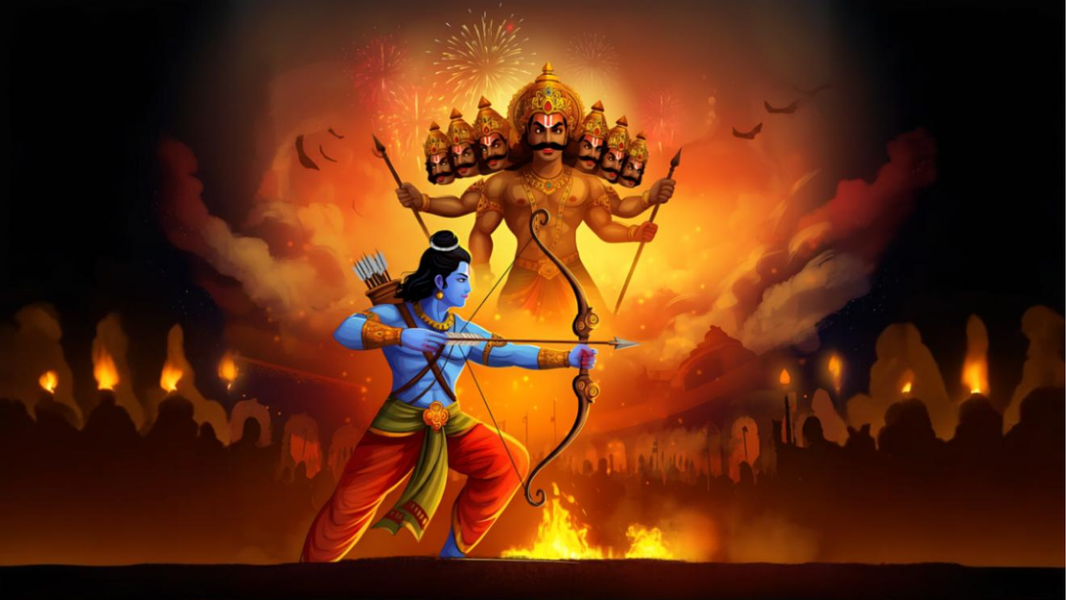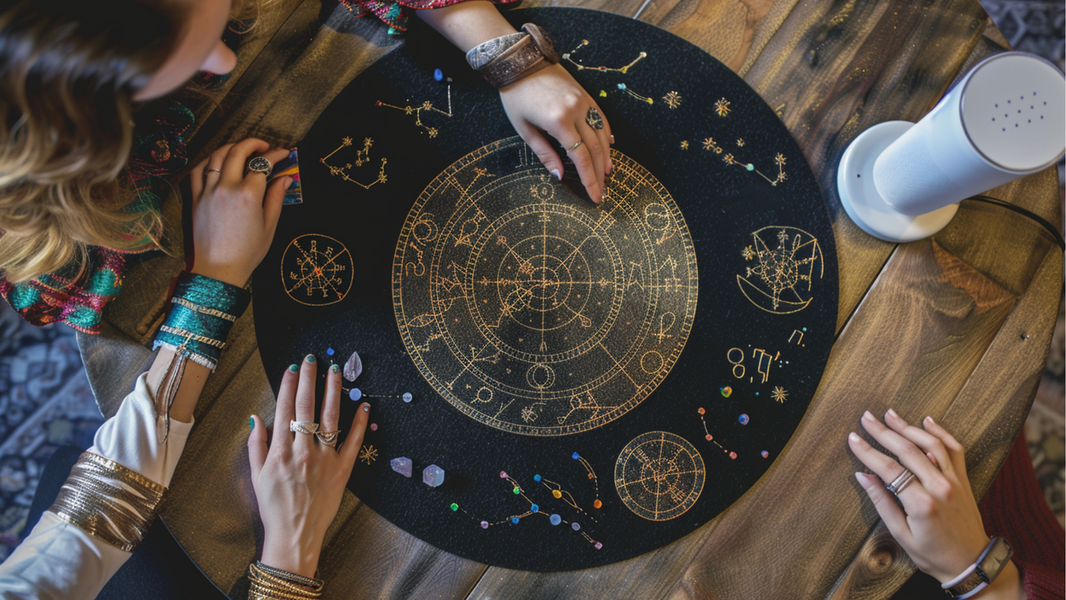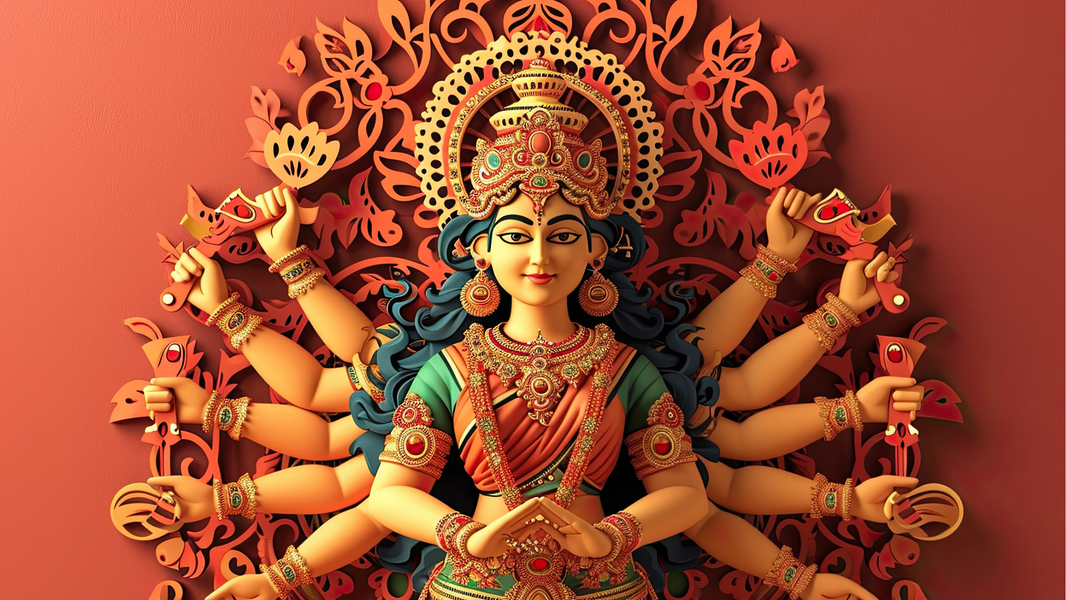Dussehra, also known as Vijayadashami, is a festival celebrated with grandeur across India. It marks the triumph of Lord Shri Ram over Ravana, the demon king, symbolizing the victory of Dharma over Adharma (righteousness over evil), light over darkness, and ultimately, good over evil. The story of Ravana’s defeat is powerful, but it goes beyond the external victory and its deeper meaning lies in the conquest of the “ten heads” of Ravana, which represent the inner obstacles that every individual must overcome.
Ravana was not just a mighty king; he was a learned scholar and a powerful ruler. Yet, his downfall came from his inability to conquer his own inner weaknesses, the very emotions and tendencies that clouded his judgment and led him astray. This Dussehra, as we celebrate Ravana’s defeat, it’s a perfect opportunity for us to reflect on our own inner Ravana, the obstacles within that we must face, understand, and ultimately conquer.
Dussehra reminds us that true victory lies not in external battles, but in mastering our inner selves with wisdom and clarity.
The Symbolism of Ravana’s Ten Heads
Ravana’s ten heads are often interpreted as representations of the ten obstacles that we face within ourselves. These are not just mythological exaggerations but are symbolic lessons from the Ramayana, representing very real challenges that continue to manifest in our lives today. Ravana’s ten heads represent emotions and tendencies that, when unchecked, lead to suffering and destruction.
These “heads” aren’t just to be seen as weaknesses of a king in a mythological story. They represent human emotions and mental states that we must understand and overcome in our everyday lives. Each head tells a story, teaching us important lessons about ourselves. Let’s take a deeper look at these obstacles.
The Ten Inner Obstacles
1. Kama (Lust / Desire)
-
What it means: Lust, or unchecked desire, often leads to distraction and dissatisfaction. When desires are not controlled, they can cause us to make impulsive choices and become detached from what truly matters.
-
Modern relevance: In today’s fast-paced world, this manifests in our obsession with material gain, fleeting pleasures, or the constant chase for more, whether in relationships, work, or lifestyle.
-
Tips: Cultivate mindful desires. Reflect on what truly adds value to your life and focus on long-term fulfillment over instant gratification.
2. Krodha (Anger)
-
What it means: Anger is a powerful emotion that destroys relationships and clouds judgment. When not controlled, it leads to rash decisions and broken connections.
-
Modern relevance: In work or personal relationships, unregulated anger leads to toxic communication, stress, and regrets.
-
Tips: Practice anger management techniques like deep breathing, meditation, and pausing before reacting. Seek to understand before reacting.
3. Moha (Attachment / Delusion)
-
What it means: Moha represents attachment to what is temporary and delusion about what truly matters. It makes us cling to things or people that no longer serve us.
-
Modern relevance: This is seen in emotional attachments to outdated beliefs, relationships, or material possessions that prevent growth and happiness.
-
Tips: Practice letting go. Reflect on what is truly aligned with your goals, values, and growth. Detach from the unnecessary, and make space for personal evolution.
4. Lobha (Greed)
-
What it means: Greed is the insatiable hunger for more. More money, power, recognition, or material possessions. It never allows for contentment.
-
Modern relevance: The societal obsession with accumulation, whether wealth, social status, or possessions, often leaves us feeling empty and dissatisfied.
-
Tips: Practice gratitude and focus on what you have. Teach children the value of sufficiency, kindness, and sharing over hoarding and excess.
5. Mada (Pride / Ego)
-
What it means: Mada, or pride, represents ego which was the biggest downfall of Ravana. It blinds us to the truth and creates arrogance, making us feel invincible.
-
Modern relevance: Excessive pride in our knowledge, wealth, or position leads to self-righteousness and prevents us from learning or accepting new ideas.
-
Tips: Practice humility. Recognize that wisdom comes from openness and the willingness to grow. Balance pride with empathy and understanding.
6. Matsarya (Jealousy / Envy)
-
What it means: Jealousy corrodes happiness. It arises from constant comparison with others and creates insecurity.
-
Modern relevance: In today’s world of social media, envy is widespread, constantly measuring our success against others’ highlight reels, leading to feelings of inadequacy.
-
Tips: Focus on self-growth. Celebrate your own achievements and progress. Teach children the importance of self-worth and gratitude.
7. Ahankara (False Ego / Arrogance)
-
What it means: Ahankara represents a false ego that refuses to acknowledge our limitations or seek guidance.
-
Modern relevance: This leads to stubbornness, overconfidence, and ignorance. It also manifests as an inability to listen to others or accept mistakes.
-
Tips: Encourage a culture of learning. Seek advice, acknowledge your mistakes, and grow through humility.
8. Bhaya (Fear)
-
What it means: Fear is the paralysis that holds us back from taking action. Fear of failure, judgment, or loss keeps us stuck in our comfort zones.
-
Modern relevance: Fear manifests in work-life imbalances, like not pursuing passions or staying in unfulfilling jobs out of fear.
-
Tips: Practice courageous living. Take small steps to face your fears and teach your children that fear is an obstacle that can be overcome with awareness and action.
9. Raga (Attachment to Pleasure)
-
What it means: Raga represents attachment to pleasure, where we indulge in sensory experiences to the point of imbalance.
-
Modern relevance: Overindulgence in food, technology, or distractions leads to poor health and dissatisfaction.
-
Tips: Encourage balance. Teach your children the importance of moderation and the value of self-control. Focus on nourishing activities that enhance overall well-being.
10. Agyana (Ignorance / Lack of Wisdom)
-
What it means: Agyana is the root of all the other obstacles. It represents ignorance, the inability to see the truth clearly.
-
Modern relevance: In a world filled with information, ignorance arises when we fail to question or seek deeper understanding.
-
Tips: Cultivate wisdom through continuous learning. Encourage questioning and introspection. Help your children grow into discerning, thoughtful individuals.
Dussehra as the Day of Victory Over These Obstacles
Dussehra is not just about celebrating the victory of Shri Ram over Ravana. It’s about looking within and confronting the ten heads of Ravana that exist in each of us.
In India, Dussehra is marked by the burning of Ravana’s effigies, symbolizing the destruction of inner evil. As the fire consumes the effigy, it serves as a reminder of our own personal battles and the need to overcome these ten obstacles.
This festival invites us to reflect on our inner Ravana and make a conscious commitment to let go of those tendencies. Just as Shri Ram emerged victorious with wisdom and clarity, we too can overcome our own obstacles by seeking balance, understanding, and courage.
Jyotisha’s Role in Recognizing & Conquering Inner Ravanas
While Dussehra provides a symbolic reminder of our inner battles, Jyotisha offers practical guidance to navigate these struggles.
Your Janma Kundali (birth chart) reveals which of these inner Ravana are dominant in your life, offering a clear roadmap for growth and self-mastery. Prashna Kundali (question-based astrology) can also help when you’re facing a particular obstacle or confusion in the present moment.
At WeWake, our team of experts provides personalized, compassionate insights to help you understand which planetary influences and inner obstacles may be affecting you. With clarity and direction, you can navigate these challenges and align with your highest potential.
Conclusion: Conquering the Ravana Within
Dussehra is more than just a story, it’s a living reminder of our inner battles. Ravana was mighty, yet his downfall was caused by his failure to conquer his own flaws.
This Dussehra, let’s reflect on our own Ravana and commit to conquering them with wisdom, clarity, and courage. With the support of Vedic astrology, you can illuminate your path, face your inner struggles, and emerge victorious on your own Vijayadashami.
May you conquer your inner Ravana and walk the path of light, clarity, and dharma.







